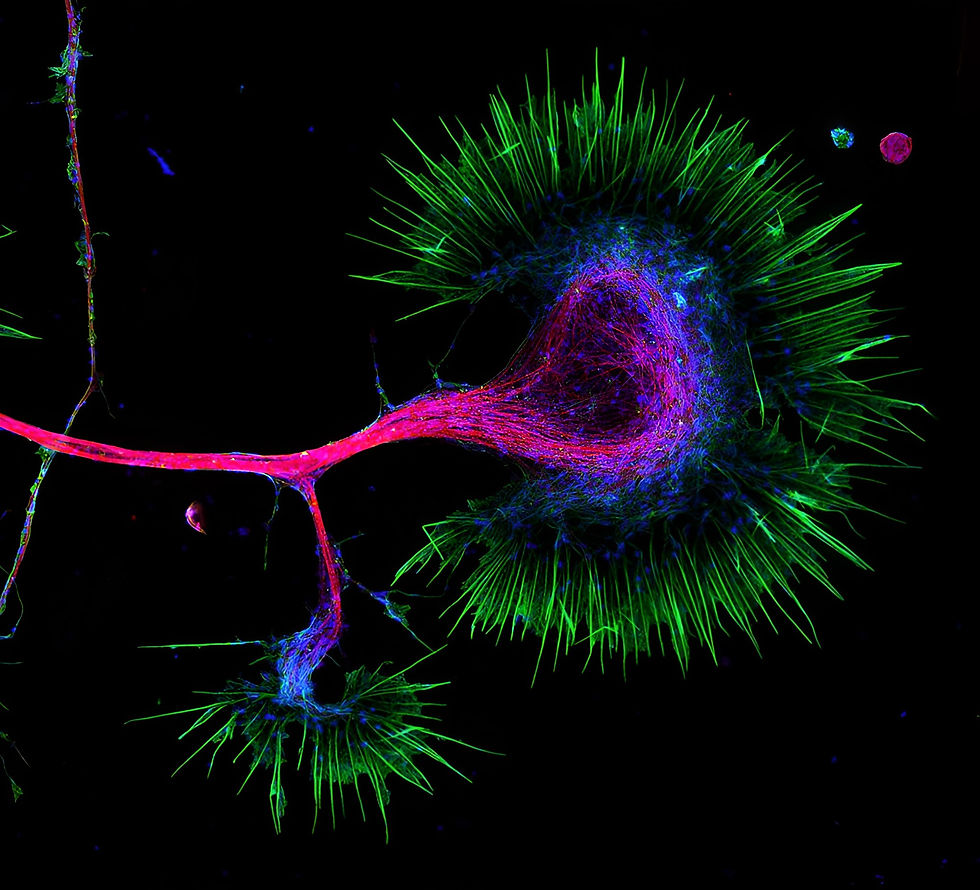Plant Sciences
- gpq3gb06x64j
- Aug 24, 2022
- 1 min read
Planting success
Modern plant sciences comprise breeding research, (plant-) developmental biology, genetics, biochemistry, and (plant-) physiology. Various experimental methods are used in plant research, and light microscopy is prominent among them. In plant science, imaging typically spans several length scales: imaging frequently starts at the scale of a whole organism, continues with tissue or sections, then individual cells are analyzed, and at the final level of resolution, intracellular features such as protein assemblies or organelles are observed.
Obstacles in plant imaging are often the sizeable autofluorescent background, which stems from the cuticle or chloroplasts.
Abberior offers several unique microscope features which facilitate imaging of plant samples at several levels of resolution:
MINFLUX imaging mode for localization precisions down to 2 nm
MINFLUX single particle tracking with up to 10 kHz, i.e., 1 data point every 100 µs
Adaptive Illumination for confocal and super-resolution STED nanoscopy at a minimal light dose
Advance time gating for confocal and super-resolution STED nanoscopy at a minimal light dose
Advance time gating for confocal and super-resolution STED nanoscopy for reducing autofluorescent background
Pulsed high-power STED lasers for best resolution in 2D and 3D super-resolution imaging
Detectors with superior detection efficiency (up to 65%)
Year | Journal | Author | Title |
2015 | Bioessays | Eugenio F. et al. | |
2017 | Frontiers in Plant Science | Veit Schubert |



Comments